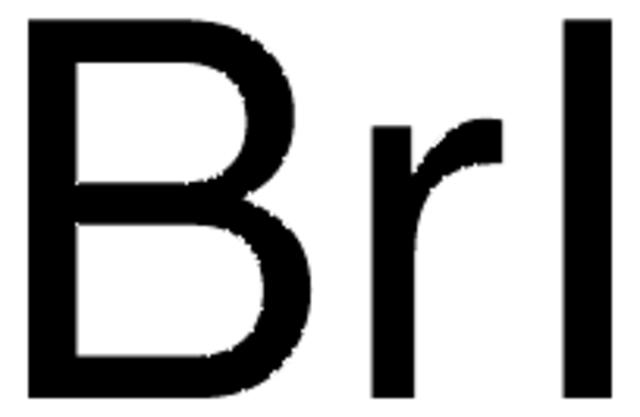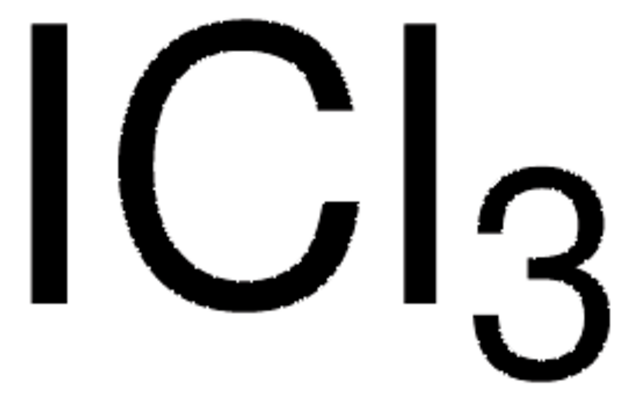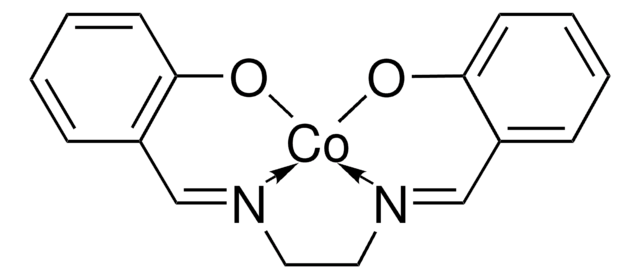714836
Iodine monochloride solution
1 M in acetic acid
Sinonimo/i:
Chloroiodide solution, Wijs solution
About This Item
Prodotti consigliati
Stato
solution
Livello qualitativo
Concentrazione
1 M in acetic acid
Densità
1.143 g/mL at 25 °C
Stringa SMILE
ClI
InChI
1S/ClI/c1-2
QZRGKCOWNLSUDK-UHFFFAOYSA-N
Cerchi prodotti simili? Visita Guida al confronto tra prodotti
Descrizione generale
Applicazioni
- As a reagent in the preparation of α-iodo β-ketosulfones from β-ketosulfones.
- In the synthesis of 3-(4-bromo-2-methylphenyl)-4-iodosydnone, which is further used to prepare substituted pyrazoles.
Avvertenze
Danger
Indicazioni di pericolo
Consigli di prudenza
Classi di pericolo
Eye Dam. 1 - Flam. Liq. 3 - Skin Corr. 1B
Codice della classe di stoccaggio
3 - Flammable liquids
Classe di pericolosità dell'acqua (WGK)
WGK 3
Punto d’infiammabilità (°F)
105.1 °F
Punto d’infiammabilità (°C)
40.6 °C
Scegli una delle versioni più recenti:
Certificati d'analisi (COA)
Non trovi la versione di tuo interesse?
Se hai bisogno di una versione specifica, puoi cercare il certificato tramite il numero di lotto.
Possiedi già questo prodotto?
I documenti relativi ai prodotti acquistati recentemente sono disponibili nell’Archivio dei documenti.
I clienti hanno visto anche
Il team dei nostri ricercatori vanta grande esperienza in tutte le aree della ricerca quali Life Science, scienza dei materiali, sintesi chimica, cromatografia, discipline analitiche, ecc..
Contatta l'Assistenza Tecnica.











